The best ways to store beets: choosing the right one and protecting the crop from damage
Growing root vegetables and harvesting them correctly is only half the battle. You need to know how to preserve the harvest for a long time. Such knowledge will be useful both to summer residents trying to preserve root vegetables from their gardens, and to pet breeders. Let's try to avoid annoying mistakes and hurtful losses.
Which varieties are most suitable for storage?
In order not to end up with rotten fruits and disappointed hopes, you need to know the necessary requirements for how to store beets. Moreover, it is important to understand in its varieties. Sometimes even the most beautiful and healthy root vegetables are not intended for long-term storage.
Remember that all early varieties can last no more than 4 months under the best conditions. Mid-late and late varieties last up to 8 months.
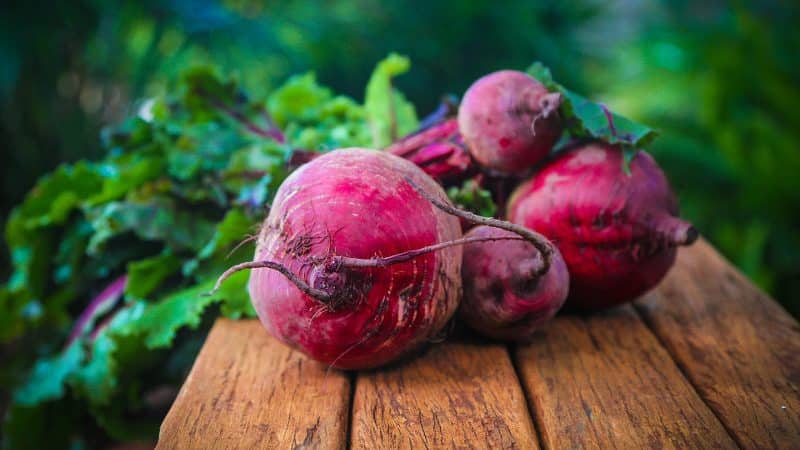
Beet varieties suitable for long-term storage:
- Mulatto;
- Salad;
- Libero;
- Podzimnyaya;
- Bordeaux 237;
- Bravo;
- Incomparable.
Important! The Cylinder variety, popular among summer residents, is not suitable for winter storage, although it has excellent taste.
When to remove beets from the garden for storage in the fall
It is important to know when is the best time to harvest in order to preserve it longer. By the end of summer, the fruits begin to gain weight and nutritional elements. You need to collect the vegetables in time, without overcooking them. It must be remembered that beets are dug up before frost sets in. Frozen root vegetables will not be stored for long.
You should also consider weather conditions at the time of collection.During periods of heavy rain, root crops are overly saturated with moisture, and there is a risk of rotting during further storage. Therefore, it is necessary to dig up beets in dry weather.
Preparing crops for long-term storage
The duration of storage directly depends on the correct preparation of root vegetables. First of all, it is necessary to follow error-free collection technology. One wrong step can lead to the loss of a good half of the harvest.
You cannot pull beets out of the ground. This method leads to damage to the skin of the root crop by particles of dry soil or sharp pebbles. Such a fruit will not survive until winter. Correct collection of vegetables: dig up the root crop with a shovel or pitchfork, lifting it along with the ground. Then carefully pull it out by the tops or pick it out with your hands. In dry weather, the beets are left to dry directly on the beds for 2-4 hours. If the harvest took place in the rain, drying must be done indoors. You need to scatter the root vegetables on the floor in one layer and let them dry for 2-3 days. The room should be well ventilated.
Dried vegetables must be lightly cleaned of soil. At the same time, you should not hit the root vegetables against each other, shaking off the dirt, so as not to damage the skin. For the same reason, it is unacceptable to clear the soil with a knife or other objects that can cause microcracks in the skin of the fruit. Even tiny cracks are an open entrance for infections. It is better to use an accidentally damaged root crop immediately, without leaving it for winter storage.
Then you should trim the tops, leaving a tail about 1 cm long. A common mistake is to unscrew the stems by hand. This method is not recommended. It is also necessary to trim the main root if its length exceeds 7 cm. It is better to leave the shorter root.The side roots are also trimmed.
Attention! It is unacceptable to wash beets before storing them for winter.
The final stage of preparation includes careful sorting of root crops. All rotten, diseased and damaged fruits must be discarded. Set aside vegetables that are too large or small. Only medium-sized fruits are suitable for long-term storage - 10-12 cm in diameter.
Storage options
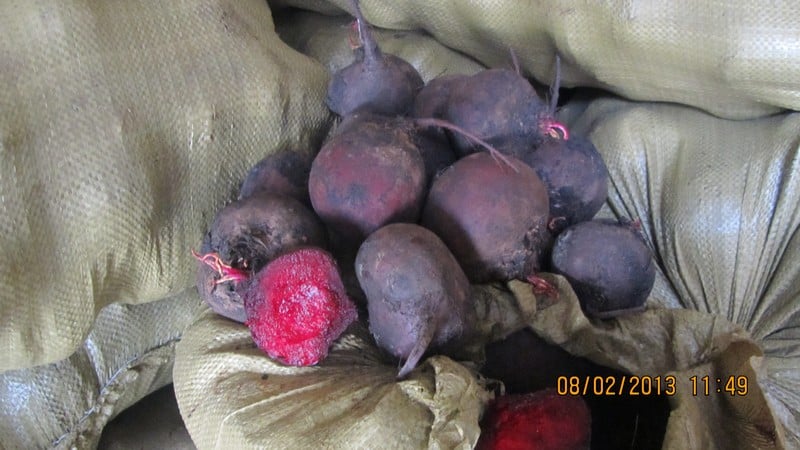
Root crops are cleaned, dried, sorted and ready for winter storage. We will describe the most convenient and most common storage methods and options, and you will choose which one suits you best. The choice depends on your preferences and capabilities. If you have a cellar, that’s great, but even an ordinary apartment will serve as a storage space.
In the apartment
You shouldn’t expect that beets will last for a long time at home, but you can count on 3-4 months. Apartment storage involves placing boxes with root vegetables in a dark place - in a pantry, under a bed or closet. The main condition is to be away from heating devices. Boxes should be chosen low. The beets need to be lined with sand, sawdust or chalk.
The storage method in sand boxes involves simple steps. River sand must be clean, sifted and calcined. You can heat it in the oven; this disinfection method is the most convenient. Root crops are placed in boxes in layers: a layer of sand, a layer of beets, and so on. This technique guarantees excellent condition of vegetables for several months.
If the apartment has a balcony protected from frost, and the temperature on it does not drop below 0°C, the beets will be perfectly preserved there until spring.The box with sand and root vegetables should be placed on the balcony, covered with a blanket in case of frost.
An open, unglazed balcony can also be equipped as a bookmark. A tightly knit wooden box will do just fine. It is necessary to install it on the balcony, insulate it with polystyrene foam or polystyrene foam. You can add light to the box by installing a small lamp. It is convenient for pulling out vegetables and will serve as heating, preventing the tubers from freezing.
In the basement or cellar
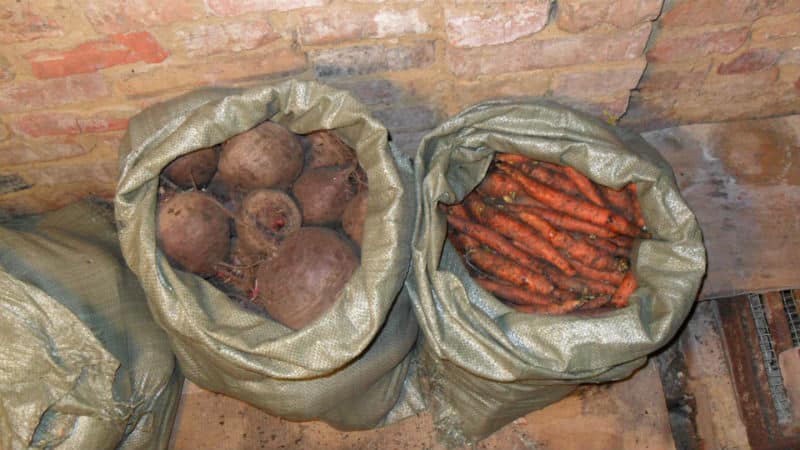
The best option with the best conditions is a cellar or basement.. You can preserve the harvest of root vegetables even by simply scattering beets on the floor. But it’s more convenient to make bins; this will only increase the shelf life.
Beets are stored well in plastic bags of 20-30 kg. In this case, the bags are not tied to allow free air flow. If condensation does appear on the walls of the bag, the tubers should be poured out and dried.
In the cellar it is also convenient to store tubers in boxes, sprinkled with sand or salt. We have already considered the method of layering with sand. And table salt will provide root vegetables with additional protection because it has antimicrobial properties.
Sprinkling with pre-sifted ash also prevents fruit from rotting. Storing beets in sawdust gives good results. Dry products of natural origin do not emit harmful substances, so they will not harm the crop.
The ancient method of storage is in clay. The method is harmless and very effective. Clay creates a protective shell for the tuber, preventing rot and disease development. You need to collect clay, sift through a large sieve and dilute with water to the consistency of sour cream. Dip the fruits into the resulting slurry one by one and set aside until completely dry.Dried root vegetables last until spring and longer.
Beets store well with potatoes. They get along great. Potatoes give up excess moisture to beets, which is exactly what they need. To do this, the beets are placed in 2-3 layers on top of the potatoes.
Shelter in piles
Summer residents often arrange shelter for vegetables in piles right in their garden. Small piles for beets begin to be made by digging a hole about 40 cm deep. Root crops are placed in the hole, covered with straw and covered with earth on top. The height of the storage will ultimately be about 2 m. In winter, it additionally needs to be covered with snow.
Is it possible to store beets in the refrigerator or freezer?
Beets can be successfully stored in the refrigerator for 1 month. Some root vegetables can last longer, but you shouldn't keep them longer. Over time, they lose moisture and vitamins.
Preparing vegetables for storage includes simple steps:
- Pre-selected medium-sized fruits must be carefully cleaned of dirt, but not washed.
- Wrap each fruit separately in parchment paper or food foil.
- Place in the vegetable compartment.
Beets are stored in the refrigerator in plastic bags for approximately the same amount of time. You need to wash the root vegetables and put them in bags with holes. You can use plastic containers for this purpose.
An alternative storage method is freezing vegetables.. To do this, chopped or chopped vegetables are packaged in plastic bags or food containers and placed in the freezer. This method is best used when it is not possible to use other storage methods. With this approach, root vegetables lose most of their nutrients.
Storing boiled beets
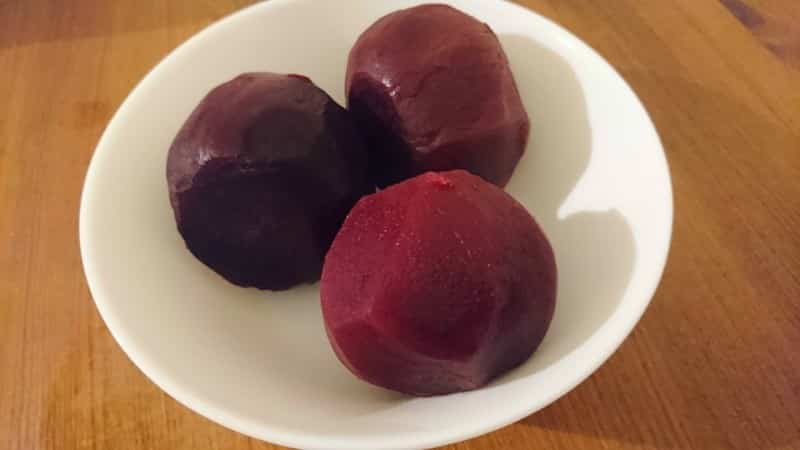
Let's consider how long boiled beets are stored in the refrigerator. It should be stored at temperatures between 0°C and +6°C. The duration of storage depends not only on temperature conditions, but also on the state in which it is stored. If the vegetable is peeled, the maximum period for which the beets can be placed in the refrigerator is only a day.
Attention! It is better to peel the boiled root vegetable immediately before use.
Planning ahead preparation of vegetables, you should leave the vegetable unpeeled. This precaution will extend the shelf life of boiled beets to 5 days. You should not store vegetables in the water in which they were boiled, as the appearance and beneficial properties of the fruit will be lost.
You can make supplies of boiled beets by freezing the vegetable. The shelf life of such a product is long. Frozen boiled beets can be stored without re-freezing for up to 80 days. Place the vegetable in an airtight bag in the freezer. All the beneficial properties of beets are preserved even after long-term freezing.
How to save tops
In addition to using the root vegetables themselves, it is possible to diversify the winter diet with preserved tops. The tops are stored in the freezer until spring, without losing their beneficial substances.
Step-by-step instructions on how to do this:
- Wash the leaves and stems well, dry and cut.
- Pack the leaves separately into bags and the stems separately. This makes it more convenient to use them later, since their cooking times are different.
- Remove excess air, seal the packaging and place in the freezer.
Important! The tops should be frozen in small portions, since repeated freezing has a significant negative impact on the taste and preservation of nutrients.
You can save the tops for the winter drying method. To do this, the washed beet stems and leaves must be cut into small pieces. Next, dry them in an oven or electric dryer at a temperature of +60ºС. Drying is also possible outdoors under a canopy without direct sunlight. Further storage of dry pieces is best done in linen bags or glass jars with lids in a dark place.
The tops will help preserve all valuable vitamins and microelements leaven. To do this, you need to wash the tops, cut them into large pieces, put them in a jar, tub or barrel in layers, arranging the greens with garlic cloves, dill umbrellas and currant leaves. Don’t forget to salt the layers and add a few grinds of black pepper. Keep the workpiece under pressure in a warm place for 3 days. Then the container is put into the cellar or refrigerator.
Another way to store tops is preservation. The method differs little from the usual preparation of cucumbers or tomatoes for the winter. The only important condition will be the need to pickle the leaves and stems separately, since their structure and rigidity are different.
Factors affecting storage duration
The best conditions for storing root vegetables are provided by a basement or cellar. Such a place satisfies all the rules for long-term storage:
- the room is dark;
- a constant temperature is maintained from 0ºС to +2ºС;
- the required humidity level is within 90-92%;
- there is natural air circulation;
- the possibility of freezing is excluded.
During the first 1-2 months of storage, these rules must be strictly followed. This period is characterized by the germination of tops if the temperature has risen to +4ºС.
Important! The storage duration will increase if you raise the containers with beets to a height of 15 cm from the floor for better air circulation.
The best “neighbors” for beets during storage
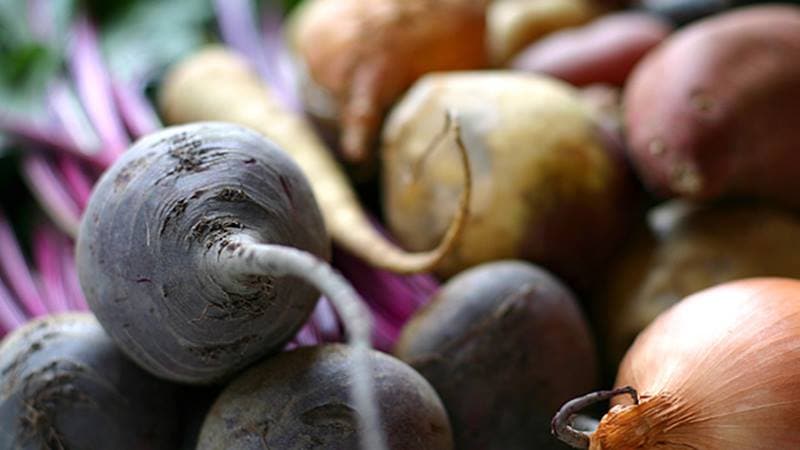
It happens that there is a cellar, but its size is small. With a very compact cellar it is impossible to fit vegetables at a significant distance from each other. In this case, how to place the crop so that everything is preserved until spring without harm?
Potatoes are considered the safest companion for beets. This method of storing beets is well-known: potatoes are poured at the bottom of the box, and beets are sprinkled on top. Potatoes protect beets from rot.
Carrots and turnips are considered good neighbors of beets.
Important! When storing root crops together, it is worth considering that their shelf life is reduced.
Some useful tips from gardeners
High-quality preservation of the harvest is the task of any thrifty gardener. Sometimes it is useful to listen to the advice of those who have shared their own experiences. We offer several recommendations:
Valentina: «Often during storage of beets and during cooking, I noticed a black core with an unpleasant odor when cut. This disease is Phomasis. To combat the disease, I soak the beets with a solution of boric acid 5 g per 10 liters of water. Prevention should be carried out 2 times per season. A before boarding It’s better to add lime to the garden bed.”
Nikolay: “Beets are a good storage vegetable. There is no need to be upset if there is no basement or cellar. It is perfectly stored in any cool room up to +4°C. I air-dry the vegetables, cut off the tops, leaving a 2 cm tail. I throw out sick and damaged fruits. I also don’t stack fruits that are too large or small. Vegetables with a diameter of 5-10 cm are best stored. I put vegetables in low boxes with holes for air.I place the boxes on stands 15-20 cm from the floor, without moving them to the wall. If there is no storage space, dry or freeze the beets. It wonderfully preserves vitamins.”
Valery: “I store beets in the cellar in a special way. I took my friend’s advice and didn’t regret it. Before this I tried all known methods, but part of the harvest was still lost. A friend advised me to store beets in a metal container with an even neck. I put the dried vegetables in an aluminum flask and closed the neck with a piece of glass. A straight hole in the storage container is necessary for sealing. I put the flask in the cellar until spring. Every time I took out the beets, I wiped the glass from condensation. Miraculously, all the fruits were preserved until the end of May. At the same time, they did not deteriorate or fade. Every last root crop was well preserved and useful. I’m sharing my experience, try it!”
Conclusion
By applying storage knowledge, you can enjoy the harvest for a long time. Having properly prepared the fruits and arranged the vegetable storage, you can use the preparations for up to 7-8 months when stored in the basement. Home storage will provide you with beets for 4 months.